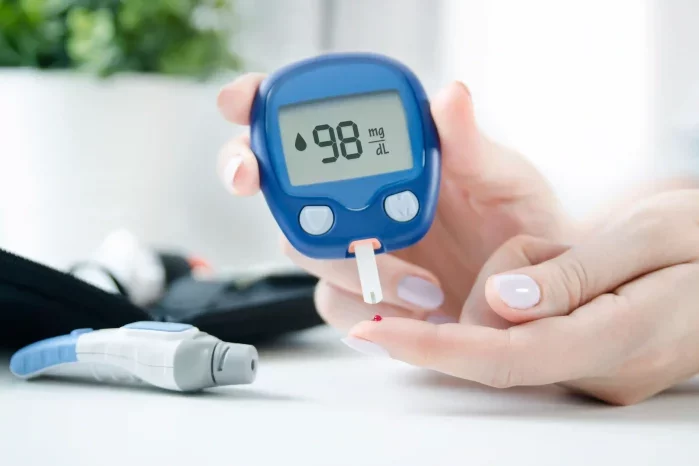Imeglimin is a novel oral antihyperglycaemic drug used to treat type 2 diabetes mellitus (T2DM). This study investigates its clinical efficacy and potential benefits on renal and liver function based on a six-month retrospective analysis at the National Defense Medical College, Japan. Results showed a significant improvement in HbA1c levels and potential benefits for renal and liver function. However, further research is needed to confirm these findings.
Diabetes mellitus (DM), characterized by chronic hyperglycemia and inadequate insulin function, poses significant health challenges worldwide. Type 2 DM (T2DM), primarily driven by insulin resistance and lifestyle factors, is a major global health issue with complications such as diabetic nephropathy (DN) and non-alcoholic fatty liver disease (NAFLD). Traditional management strategies for DN and NAFLD are limited, necessitating new treatment options. Imeglimin, a first-in-class oral antidiabetic agent, has shown promise in clinical trials. Approved in Japan in 2021, imeglimin’s unique mechanism—acting on mitochondrial function and insulin sensitivity—warrants further investigation. This study aims to evaluate imeglimin’s efficacy and its impact on renal and liver function.
Materials & Methods
Study Design and Participants
This single-center retrospective study involved patients with T2DM treated with imeglimin for six months. Data included demographic information, clinical laboratory results, and changes in glycated hemoglobin (HbA1c), renal function, and liver health. DN and NAFLD were assessed using urinary albumin-to-creatinine ratio (UACR), fatty liver index (FLI), and FibroScan.
Definition of DN Stages
- Normoalbuminuria: UACR < 30 mg/g
- Microalbuminuria: UACR 30-300 mg/g
- Macroalbuminuria: UACR > 300 mg/g
Diagnosis of NAFLD
NAFLD was diagnosed using FLI ≥ 60, with exclusion of other liver disease causes. FibroScan measurements were used to evaluate liver stiffness and fat content.
Statistical Analysis
Data were analyzed using paired t-tests or Wilcoxon signed-rank tests to compare baseline and six-month values. Statistical significance was set at P < 0.05.
Results
Baseline Characteristics
The study included ten patients with a mean age of 63.1 years and a baseline HbA1c level of 8.4%. Most patients had obesity (mean BMI 28.8 kg/m²) and were on various antidiabetic medications.
Effect of Imeglimin on Glycemic Control
Imeglimin treatment led to a significant reduction in HbA1c levels from 8.4% to 6.8% (P = 0.01). There was also a notable decrease in BMI (P = 0.03). C-peptide index (CPI), reflecting insulin secretion, increased, although not significantly (P = 0.14). Other metabolic markers, such as fasting glucose and lipid profiles, showed minimal changes.
Effect of Imeglimin on Renal Function
No significant changes in estimated glomerular filtration rate (eGFR) were observed, indicating potential safety for renal function (59.5 mL/min/1.73 m² to 59.4 mL/min/1.73 m², P = 0.98). UACR levels tended to decrease, with some patients showing improved DN stages.
Effect of Imeglimin on NAFLD
In patients with NAFLD, liver stiffness measurement (LSM) and controlled attenuation parameter (CAP) showed minimal changes after six months. LSM increased slightly (7.80 kPa to 8.10 kPa, P = 0.79), while CAP decreased slightly (316 dB/m to 294 dB/m, P = 0.21), suggesting possible stabilization of liver conditions.
Side Effects
Imeglimin was generally well-tolerated. Minor side effects included self-limiting nausea and fatigue. No significant hypoglycemia or serious adverse events were reported.
Discussion
Imeglimin demonstrated promising results in improving glycemic control in T2DM patients. Additionally, it showed potential benefits for renal and liver functions, with some improvements in DN and NAFLD. The observed effects on DN and NAFLD, though preliminary, suggest imeglimin might offer added therapeutic benefits beyond glycemic control. However, the short study duration and small sample size warrant caution in interpreting these findings. Long-term studies are needed to confirm imeglimin’s efficacy and safety profile, particularly concerning renal and liver health.
Conclusion
Imeglimin is an effective antihyperglycaemic agent for T2DM, with preliminary evidence suggesting potential benefits for renal and liver functions. Further research is essential to validate these findings and explore imeglimin’s long-term impacts.
Related topics:
NovaLead’s Repurposed Drug for Diabetic Foot Ulcer Receives CDSCO Approval
Can Medium-Chain Fatty Acids Lower Diabetes Risk?
FDA Issues Warning on Overdoses of Compounded Semaglutide for Weight Loss Due to Dosing Errors

























